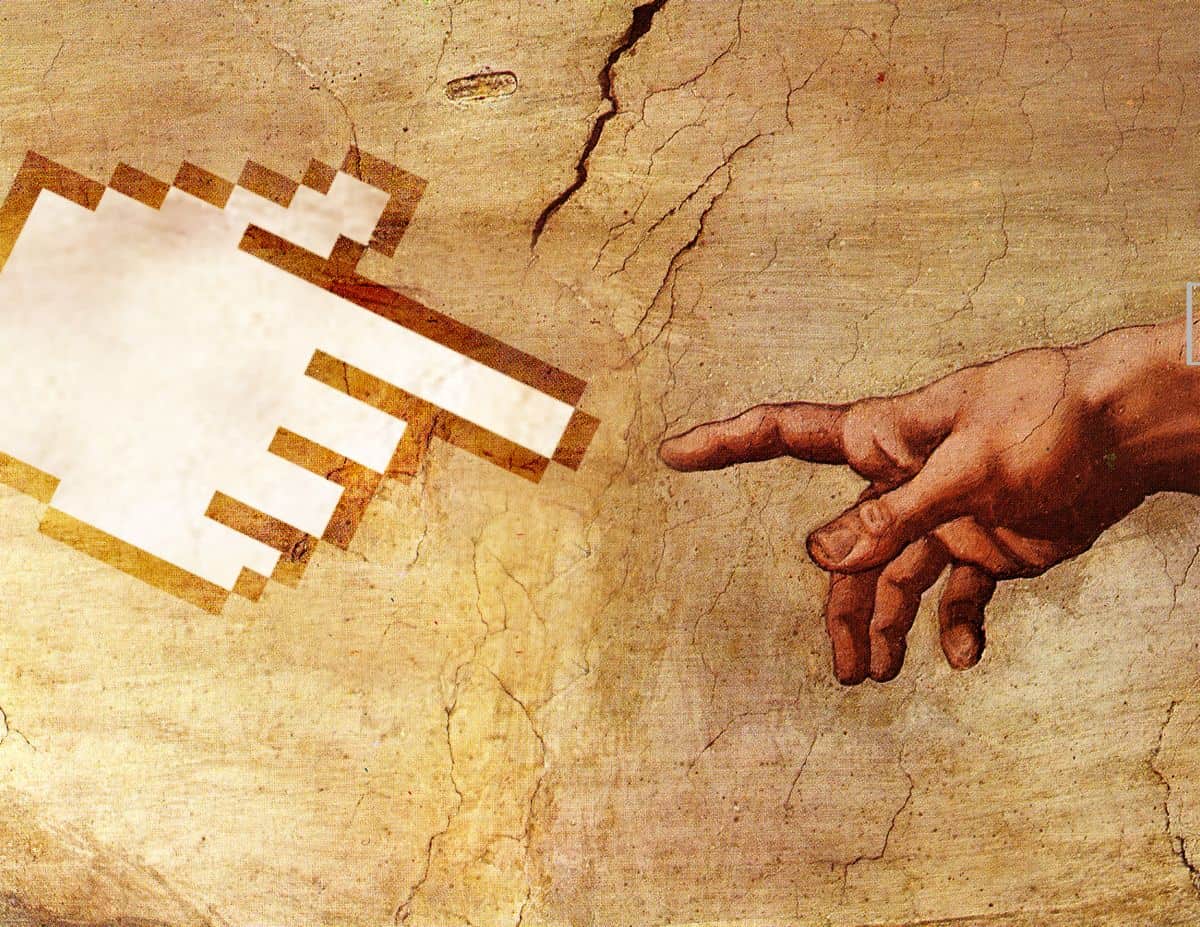App design trends come and go, but being unique never goes out of style. While it’s important to keep your designs current and to use a language that’s familiar to your users, it’s all too easy to design an app that looks like something they (and you) have seen over and over again.
Think of every time you’ve loaded up an app store looking for a new way to divert yourself and pass the time. If you love a particular kind of puzzle game, you’ve probably seen at least a handful of versions of it, none of which particularly stands out. Scroll through apps in every other category — from music, to photography, to utilities — and you’re bound to see some twins and triplets. Imitation may be the greatest form of flattery, but it’s also the surest way to bore potential users.
Everyone wants to be disruptive, but it’s hard to make yourself stand out when your app designs look like they were cut from the same cloth as everyone else’s. How can a designer strike that balance between on trend and cutting edge? While originality can feel like the hardest part of being creative, you don’t need to wait until a muse settles on your shoulder. Keep the following eight tips in mind, and your app designs will be one of a kind:
1. Beware of “Can we make it more like…”
When it comes to app design, developers and designers tend to think outside the box at first. Often, the prototype draft app design is colorful, full of life and highly experimental. Maybe it takes advantage of a new feature added in Android or iOS, or maybe it completely shifts every popular design paradigm (in a good way).
Eventually, though, suggestions start pouring in: how does it compare to this app? Does it do this thing that these other trendy apps do? Why isn’t the UI more like this other app?
A lot of those comments might seem like good suggestions. After all, if certain app designs end up selling thousands of copies, there’s probably something there, right? Whether it’s from your work mentor, your project manager or your client, this kind of feedback is poisonous to originality. If you’re creating an app that will just be used internally, that’s one thing — familiarity can’t hurt if you’re not trying to push millions of copies.
But if you’re trying to be disruptive, it’s time to politely remind those voices that your ultimate goal isn’t to imitate, but to create something the user can’t get anywhere else.
2. But also stay ahead of the trend.
Trends exist for a reason. In mobile app design, design trends often follow technological shifts. For example, larger screen sizes in smartphones and the rise of the “phablet” have led to different types of gesture-based design. Where once you may have tapped, now you swipe.
If you want your newest creation to blend into a sea of mediocre app designs, the best thing to do is to stop learning. Let’s face it: as mobile app geeks, we’ve all downloaded a new app only to be put off by a user interface design that screams “two thousand and late.” The best and most cutting-edge designers are always staying on top of industry outlets and emerging trends, finding new techniques to try — and to subvert.
And of course, to quote Sun Tzu, “Know your enemy.” You can’t exactly buck a trend unless you’ve actually paid enough attention to notice it. You want to be original? It starts by knowing what you’re up against.
3. Take a look at your own portfolio, and see where you’ve gotten lazy.
There’s nothing wrong with having a style. In fact, there’s nothing wrong — even in the world of mobile app UI design — with the occasional auteur. Think of directors like Stanley Kubrick or Quentin Tarantino. If, hypothetically, a studio released a brand new film by either creator (in Kubrick’s case, posthumously) without identifying who made it, you could likely identify it sight unseen. There are tropes both directors use across their films that create a visual trademark.
However, for every successful auteur there are countless artists who don’t so much have a style as a formula they follow for each new creative venture. If you’ve noticed that your portfolio is full of app designs that all start to blur together, or that your agency’s creative “look” is becoming less of a suggestion and more of a directive, figure out what it is you keep doing over and over. Then stop doing that thing.
It could be a particular typeface you’ve grown overly fond of, a color palette you never get sick of seeing (though your users have already moved on) or even an overall UI layout you’ve driven into the ground. Don’t let it get you down. It’s only natural to rely on what has worked in the past to create new things. But “natural” is the enemy of “disruptive,” and if you want your app designs to stand out in a sea of clones, you’ll need to figure out where your comfort zone is and set your new coordinates as far from it as possible.
4. Form follows function, so start with a unique purpose.
One of the simplest (and, paradoxically, most difficult) way to make your app designs stand out is simply to create super unique apps. Worried that your photography app will look like an Instagram clone, or that your music streaming app UI will betray your admiration of Spotify?
Stop worrying about how your app designs look, and focus on what they do. If the functionality will set them apart, the design will most likely follow.
Look at your favorite apps: what are they missing? What features will your app provide that the marketplace is currently lacking? If you put a truly innovative app out there, you might find that you’re the one designers and developers end up imitating. In other words, you’re the trendsetter, and that’s an enviable position to be in!
5. Get creative with copy.
When most people think about app designs, they generally start thinking about prototypes and art assets. Think a little harder, and you get to color palettes, typography, gestures, textures.
Copy? Maybe not so much.
While it might not seem obvious, copy is one of the most important parts of your mobile UI design. Every button, menu or instruction you present to your user will have some sort of copy on it — whether that copy is visible on the actual design element or available through a separate accessibility function — and that copy can give your app a lot of flavor. (Ever read a webcomic with terrific alt text, like XKCD or Dinosaur Comics? Something as simple as well-written alt text can extend the punchline and the value of the comic a few precious seconds.)
The great thing about using copy to enhance your mobile app designs is that it’s such a relatively simple fix, especially if you’re talking about live text. If you have a great writer on staff, you can inject a bit of sass or humor into your app, and voila! Instant differentiation factor. Compare that to the hassle of changing the animation, layout or color scheme of your app, and it’s easy to see the ROI of good copy.
6. Make it run as smoothly as possible.
Quick: think about an app on your phone that runs quickly and smoothly every single time you load it. No crashes, no long loading times. No annoying push notifications. No more memory eaten than absolutely necessary.
Sort of a short list, we’re guessing.
No matter what features are popular, no matter what the app is for, and no matter what the platform is, users will always be impressed by an experience that just works. If they have to play around with it — or worse, they have to wait for it to load — chances are they’re going to dump it before moving on to something else.
While that might seem like more of a tip for developers than designers, the reality is that the design of the UI is as important to the experience as any bit of code. Is it intuitive? If your app has options, are they clearly explained? Is there ever a moment that might cause a user to get frustrated because they can’t find a button, or simply can’t figure out how to use your app?
The good news is that while creating a buggy app (and short-changing your testing and quality assurance process) will distance many potential users, designing and developing an app that works like a dream will absolutely set you apart from the competition. Let’s face it: while the ecosystems of Android and iOS are sort of crowded places, everyone and their uncle is creating an app, and the vetting processes at Google and Apple don’t account for the minor QA details that ensure that the app experience is smooth as butter. There are a lot of frustratingly broken apps out there, and a ton that are just okay.
Make your app designs intuitive and usable, and develop your app for flawless performance, and you’ll set yourself apart immediately.
7. Get feedback from beta users.
Okay, remember that part in the beginning where we told you to ignore reviewers when they ask you to make your app designs more like something they’ve seen before? That still stands, but it doesn’t mean you shouldn’t seek feedback at all.
Often, your beta users can offer a fresh perspective you hadn’t considered before — they can be as invaluable to your app designs as your art director, or anyone else on your design team. One thing you can count on is that they’ll sniff out anything that makes your user interface design less usable, so again, you can stand out from the crowd in terms of quality.
But maybe the best way to use feedback to make your app designs more unique and experimental is through A/B testing. Have a truly outrageous idea that you think has a chance of working, even if it’s not the way things are normally done? Create two separate digital prototypes, one a bit more conservative and by-the-book, and one with your riskier idea, and see how your beta users react. If it fails, you’ll know for sure, and go back to the drawing board. If it succeeds, you’ll have some evidence that you’re on to something new, original and great.
8. Let users customize your design.
Why not take user feedback a step further?
You’ve picked a color palette, carefully designed every pixel, and made sure that every font is the perfect size. While it’s important to have a default UI that is useable, allowing users to mod (or skin) your UI —or simply customize it in a variety of ways — can make your app stand out. While many users just want something that works, there’s a whole group of power users who like to dig in, customizing everything you’ll let them touch.
While the idea of letting a user completely reconfigure your app designs might make you cringe (and maybe that’s just not practical for your app), letting them play with things such as the color palette, font, or general background can make your app stand out. We’re not suggesting that you give them complete control, but simply adding a few UI options can make users feel like your app is “their” app, too. Not only will this convince them to continue using your product, but it increases the chance they’ll tell their friends about it, too.
Don’t Settle For The Same Old App Designs
Nobody goes into mobile app design or development because they’re staunch traditionalists who love the reliability of order and routine. When you stake your livelihood on a technology that’s constantly in flux, with design trends that come and go faster than you can say “skeuomorphism” (and certainly faster than you can spell it), you probably get a bit of a thrill from risk-taking. And when you enter into any creative field, that love of risk is your bread and butter.
Making sure your app designs stand out against the crowd starts with not settling with what’s established, and it ends when you follow through with a groundbreaking prototype. Need inspiration? Check out Proto.io Spaces, where users showcase their innovative prototypes for Android and iOS apps, as well as wearables. See if anything stands out to you — and then figure out what makes it work.
What do you think makes truly unique app designs rise above the rest? Let us know on Twitter @protoio!










